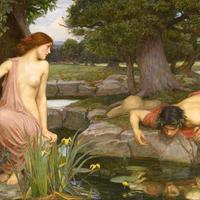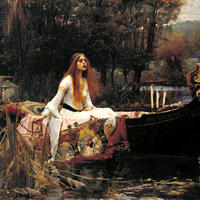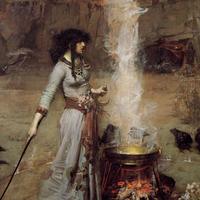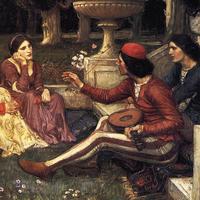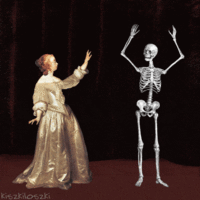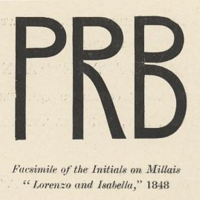More about John William Waterhouse
- All
- Info
- Shop
Works by John William Waterhouse

Sr. Contributor
John William Waterhouse paints your dreamy romantic fantasies.
Whether you know it or not, you’ve seen a Waterhouse in one of the following locations:
- (For us literature nerds) on the cover of an edition of Hamlet, The Decameron, or Le Morte D’Arthur
- Hanging in the dorm of a girl named Feather who you met at an open mic night in a café that smelled more like patchouli than coffee.
- Reproduced in the “encyclopedia” about mermaids you gave your niece for her 7th birthday.
Here is the little we know about the man: Born in Rome to a pair of artists, he moved to England in his youth where he was formally trained in sculpting and then painting. “Nino” as his friends called him was a prolific painter of hot white chicks lounging near water from scenes in literature; he focused mainly on babes from Arthurian and Greek mythologies. He married an artist named Esther who liked to paint flowers and he died of cancer without producing an heir.
By all accounts Waterhouse was a perfect gentleman. If he was so nice and successful why do art critics love to hate him? To them he will always be less than his Pre-Raphaelite influences who used similar themes and had incredibly similar tastes in the ladies but whose art displayed that ever-important “depth” and “philosophy” which his “lacks.” Blaaaarrgh. What haters. Whether philosophical or not, Waterhouse’s idealized and stextualized women (yes, I did just combine sexualized and textualized, take that English language!) speak volumes to the sexual politics of the time and send my little literary loving heart all aflutter with allusion and metaphorical possibilities. Here are some ways he can help you b.s. your way into a humanity professor’s heart:
- Write your entire thesis on the representations of sexual status based on the hair of his women compared to their literary counterparts. Throw in references to the Little Mermaid cartoon just to see if you can get away with it.
- Focus on his use of occult imagery as a reference to the growing suffrage movement and a reinforcement of the strong woman as “witch” trope. Bring up moon symbolism and Victorian’s fear of menses as much as possible.
- Solve the mystery of who his models were and win at art forever. No joke here, we’d all just really like to know.
I’m not the only one with an affinity for Waterhouse. In 2000 the Andrew Lloyd Webber Art Foundation spent over £6.6 million at auction for the paintings St. Cecilia, £1 million of which was paid by tax relief from charity donations. If you’re thinking “Jesus Christ Superstar that’s a lot of money!” you’re right, at the time it was the highest sum ever spent on a piece of Victorian art. In 2008 HM Revenue and Customs called out Sir Webber, stating that the many months the painting spent in his personal collection rather than on public display defied the tax rules. Cats out of the bag Sir Webber, you cheeky monkey.
Featured Content
Here is what Wikipedia says about John William Waterhouse
John William Waterhouse RA (baptised 6 April 1849 – 10 February 1917) was an English painter known for working first in the Academic style and for then embracing the Pre-Raphaelite Brotherhood's style and subject matter. His paintings are known for their depictions of women from both ancient Greek mythology and Arthurian legend. A high proportion depict a single young and beautiful woman in a historical costume and setting, though there are some ventures into Orientalist painting and genre painting, still mostly featuring women.
Born in Rome to English parents who were both painters, Waterhouse later moved to London, where he enrolled in the Royal Academy of Art Schools. He soon began exhibiting at their annual summer exhibitions, focusing on the creation of large canvas works depicting scenes from the daily life and mythology of ancient Greece. Many of his paintings are based on authors such as Homer, Ovid, Shakespeare, Tennyson, or Keats.
Waterhouse's work is displayed in many major art museums and galleries, and the Royal Academy of Art organised a major retrospective of his work in 2009.
Check out the full Wikipedia article about John William Waterhouse



